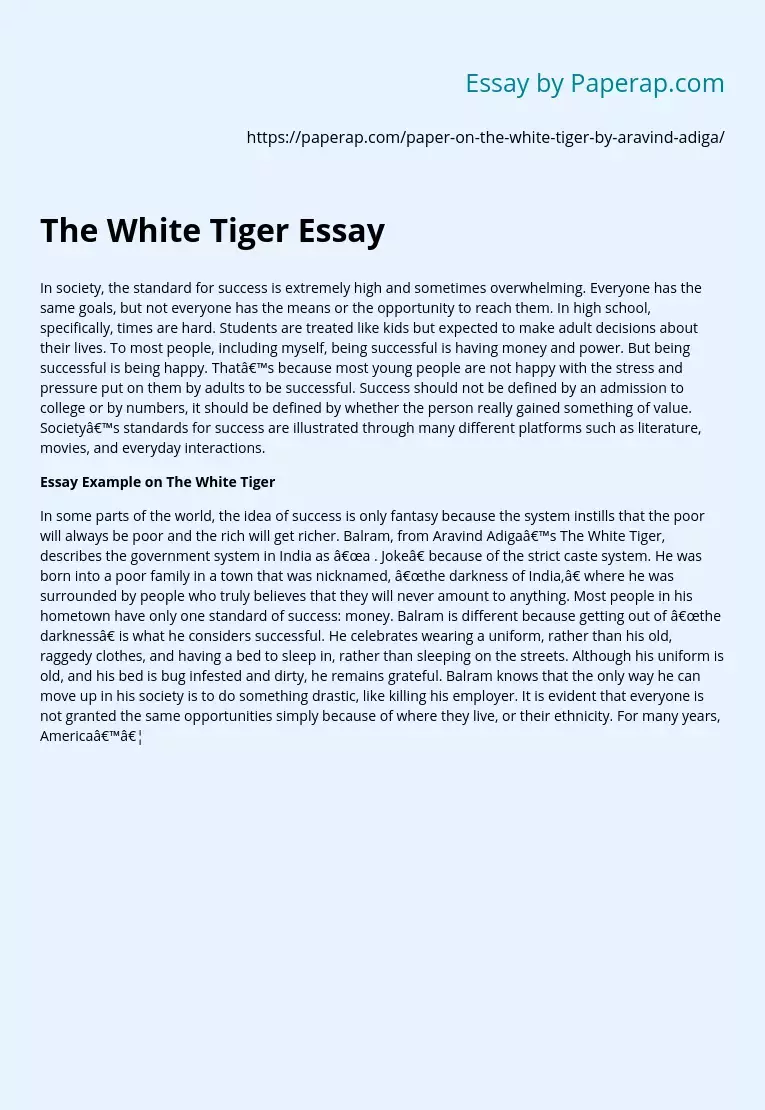The White Tiger Essay
In society, the standard for success is extremely high and sometimes overwhelming. Everyone has the same goals, but not everyone has the means or the opportunity to reach them. In high school, specifically, times are hard. Students are treated like kids but expected to make adult decisions about their lives. To most people, including myself, being successful is having money and power. But being successful is being happy. That’s because most young people are not happy with the stress and pressure put on them by adults to be successful.
Success should not be defined by an admission to college or by numbers, it should be defined by whether the person really gained something of value. Society’s standards for success are illustrated through many different platforms such as literature, movies, and everyday interactions.
Essay Example on The White Tiger
In some parts of the world, the idea of success is only fantasy because the system instills that the poor will always be poor and the rich will get richer.
Balram, from Aravind Adiga’s The White Tiger, describes the government system in India as “a . Joke” because of the strict caste system. He was born into a poor family in a town that was nicknamed, “the darkness of India,” where he was surrounded by people who truly believes that they will never amount to anything. Most people in his hometown have only one standard of success: money. Balram is different because getting out of “the darkness” is what he considers successful.
He celebrates wearing a uniform, rather than his old, raggedy clothes, and having a bed to sleep in, rather than sleeping on the streets. Although his uniform is old, and his bed is bug infested and dirty, he remains grateful. Balram knows that the only way he can move up in his society is to do something drastic, like killing his employer. It is evident that everyone is not granted the same opportunities simply because of where they live, or their ethnicity. For many years, America’…
The White Tiger Essay. (2019, Nov 27). Retrieved from https://paperap.com/paper-on-the-white-tiger-by-aravind-adiga/

